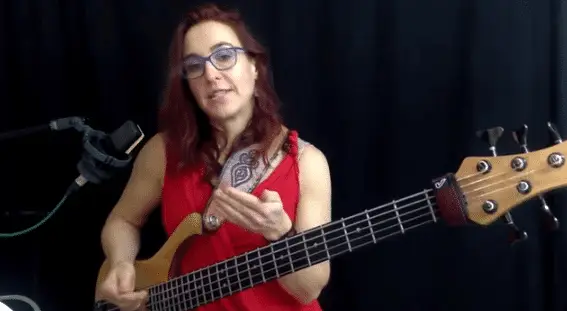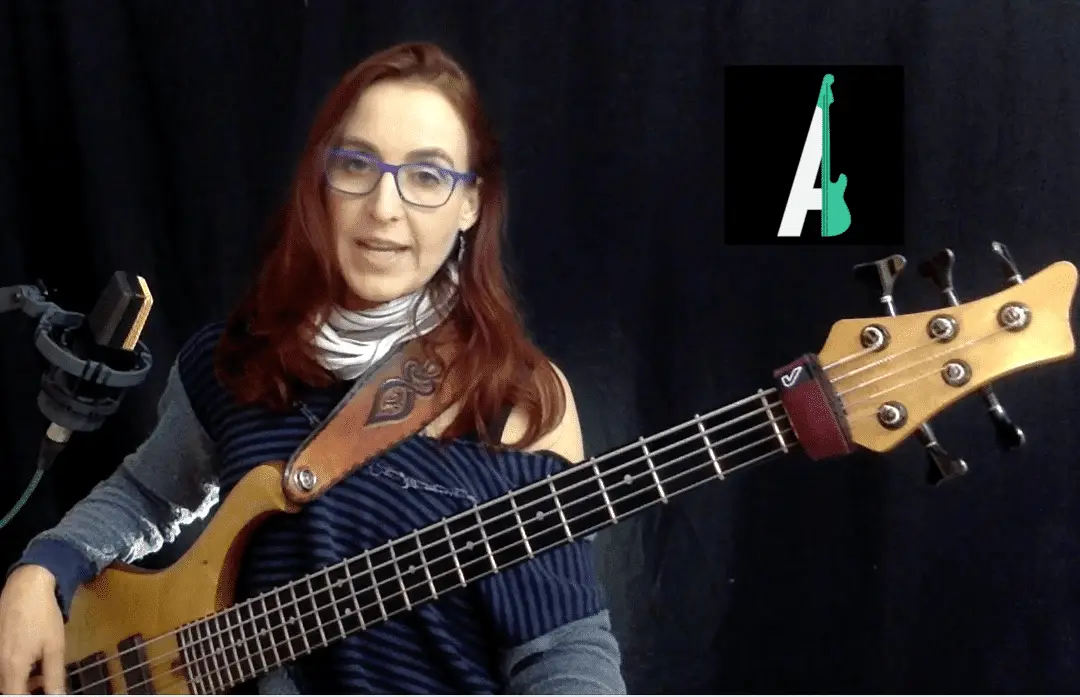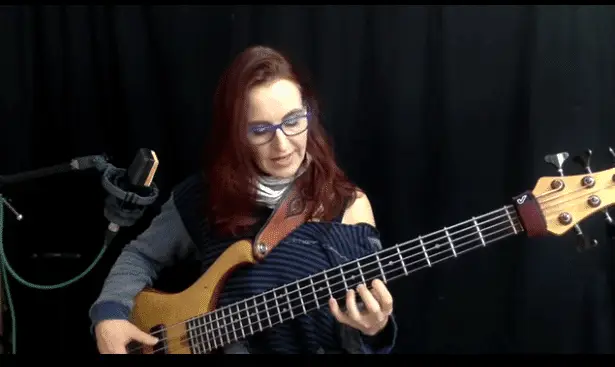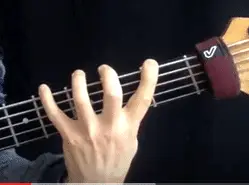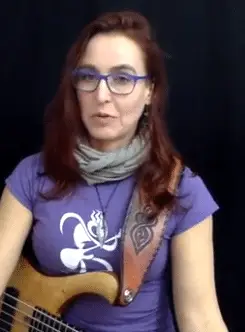The Diminished Scale
 In this Bass Bit I will walk you through another sequence of seconds – in this case major and minor seconds alternate. If you alternate major and minor seconds and start with a major second it is called the diminished scale.
In this Bass Bit I will walk you through another sequence of seconds – in this case major and minor seconds alternate. If you alternate major and minor seconds and start with a major second it is called the diminished scale.
Using it to explore the bass…
This is the scale to use over diminished chords or diminished seventh chords. For the exploration of the bass it is fun to play with because it is another symmetric scale, so you can move little licks around within it. I demonstrate using it for fun shedding with a delay pedal as well as with a background track. Whether you are a beginner or advanced, have fun with this sound!
This is my Marleaux Consat bass by Gerald Marleaux in the video.
The strings I use are by Dean Markley SR 2000s.
TC electronic is the brand of my delay pedal, amp and cab.
And the brown thingy on my first fret? that’s a fretwrap by Gruvgear!
I am an official sponsor of all these fine companies.
Transcript:
BASS BIT #11
[Intro playing: 0.00 to 0.10]
Welcome to Bass Bit # 11. We’re still talking about seconds. Major seconds and minor seconds are really fun material for scales, so we’ve already looked at the scale that is made up out of exclusively half steps which is the chromatic scale. We’ve also looked at the scale that is made up out of exclusively whole steps, which is the whole tone scale.
Today, we’re going to talk about a scale that is a combination of whole steps and half steps. There are two. Now with these symmetric scales there is a sequence that always repeats repeats repeats, so there is not the concept of having a leading tone in the beginning in the end, like you would have on a regular major scale, or a minor scale or any of the notes, all of which we’ll get to.
One of the fun things about these symmetric scales is that, even though they are sonically a bit more complex, they are really accessible on the fret board, because it’s a repeating pattern and once you understand how to move it up and down, there’s a lot of stuff you can do with them. Out of the combination of whole steps and half steps we can build either a scale that starts with a half step, then is followed by a whole, half whole half whole half whole and so forth. Or, we can build a scale that starts with a whole step, whole, half, whole, half whole half. In the book, I am on page 29, where both of these scales are explained and I want to play you the three diminished scales in the fingering as it’s shown in the book.
Now what’s really interesting about these diminished scales: as I said they don’t really have a beginning and an end. They are symmetric in nature, so they have actually more than one beginning. What I mean by that is that, for example, the E diminished scale also contains the notes of the G diminished scale, the B flat diminished scale and the C sharp or D flat diminished scale.
If I start with a whole step, this is called the diminished scale. This has to do with the sounds that it describes. Sort of chord changes that you will be playing this with. If I start it with a half step, it’s called the diminished dominant scale – also because it’s the tone of material that you can be using this with.
I want to start out with the diminished scale and that is also the whole half tone scale and you will see it described on page 30. And, as with the symmetric scales, the sequences repeat. So, I don’t have 12 chromatic scales. It’s basically one chromatic scale, right? Because each and every note could be the starting point. This is similar with the diminished scale also, because the notes that are for example in the E diminished scale are the same notes that are in the G diminished scale, in the B flat diminished scale on the D flat diminished scale. It’s just that when I call it the D flat diminished scale, I’m starting on D flat but I use the exact same sequence as I would be on the E, G or B flat one. As you notice [playing: 3.15 to 3.17] they’re all a certain interval apart and we will be talking about that interval very soon. It’s a minor third.
We’ll what’s relevant here is that they contain the exact same notes. So I’m gonna just play through one of the examples on page 30 for the E diminished scale or G, B flat D flat diminished scales. So I’m starting with an open string – that gives me a whole step [playing: 3.37 to 3.45] right there in the beginning – but then I have this shape of half-step-whole- step-half-step and then I’m going to the next string, so I have a whole step in between these two. And I encourage you to really think through: why is the E diminished scale the same thing as he G, B flat and D flat diminished scale? How does that work?
With the diminished scales, we have three. Each diminished scale basically covers four roots if you will, and the roots again are only relevant because of what the chord symbol will say. And the way these scales are built, I don’t get a sense of a beginning and an ending. They are always the same pattern, following the same pattern and they don’t sound like your regular major scale which for example [playing: 4.17 to 4.23] clearly has a root. Right?
So with the diminished scales, that’s different. That said, they create great tonal material, great variation; and I want to show you a little bit how to use them. There are two ways of playing them: You can either [playing: 4.35 to 4.59 ] play the next note and then scoot. So, whole step, and then you have either – next note then scoot – going here. Then next note, then scoot. [playing] Or you can scoot right away. Backwards – descending – same idea: you scoot first, or you scoot later [playing: 5.04 to 5.09]. Or [playing 5.11 to 5.16].
Ok, so those two options are, I think, good fingering. I wanna play you the scale that is written out on page 30. This is the scale that does not start with an open string. So it’s a little bit different [playing: 5.29 to 5.38]. The chord that you would be playing this scale over is a diminished chord. It sounds like this [playing: 5.48 to 5.54].
Later we’ll talk about what that chord is, where it comes from, what it consists of, and all that good stuff. But for right now it is maybe useful to know that any diminished 7 chord will be a great back drop to use those scales over. If you have iReal pro or something similar, plug in a diminished 7, d-i-m 7 chord that’s what you want it to say, not “minus 7 flat 5” and not “half diminished”! But “diminished”, or “fully diminished” or “diminished 7”. And then you can use that scale over that backdrop. Also: I as always love to use my delay pedal [playing: 6.31 to 6.49]. And so forth.
That will give you some ideas to make music with the diminished scale. Great fare to know, great to really go up and down the fret board and get familiar with how the fret board works. Again, we’re fingering major seconds and minor seconds and we’re making music with that. Alright, have fun!

